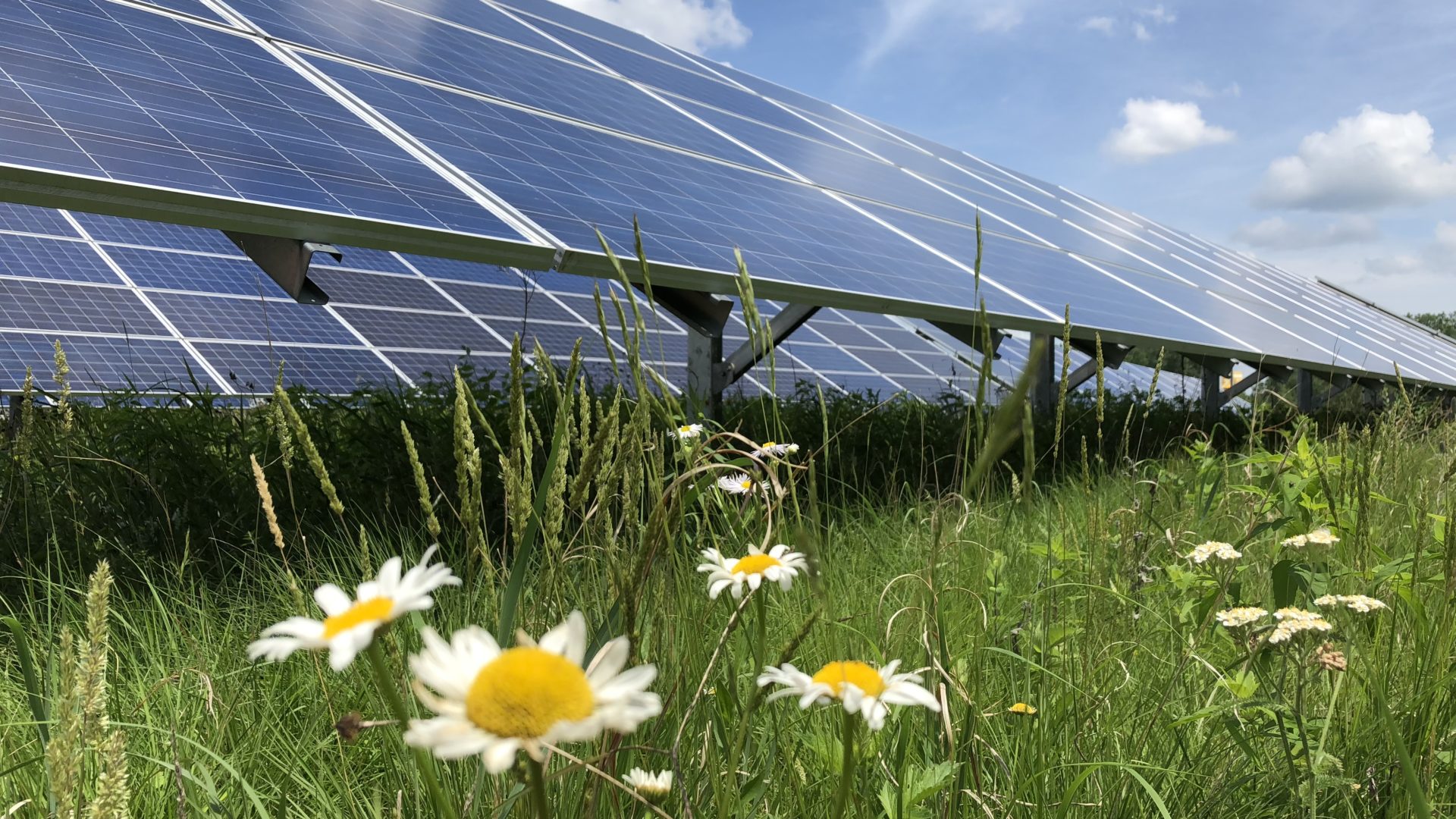As we strive to build more renewable energy across the U.S., we are excited to capture the opportunity to expand habitats for bees and other pollinators.
Launched in October 2018, our Renewable Energy Portfolio allows companies to purchase the Renewable Energy Credits (RECs) they need and fund the construction of new, community-scale renewable energy every year. With our first new renewable energy project — The Forest City Solar ProjectHB in Iowa — companies also play a role in establishing new pollinator habitat around the solar arrays.
Pollinator habitat advisor to the project and director of the Center for Pollinators in Energy at Fresh Energy, Rob Davis, discusses using the European method of creating pollinator habitats underneath solar arrays instead of using turf grass or gravel in his 2017 TEDx Talk. Costs for creating and maintaining habitats are comparable to maintaining gravel or turf grass under an array, and gain the added impact of helping pollinators sustain their role in food security.
“One-third of every bite of our diets, 75% of crops globally, rely on bees and wildlife to move pollen between flowers,” Davis says. He goes on to explain that these habitats are further beneficial for agriculture because, “…deep-rooted native plants capture the stormwater coming off the panels, channeling it right down into the aquifer, breaking up compacted soils, adding organic matter and improving the quality of agricultural soils over the life of the project.” The pollinator habitat is developed per an Audubon Society standard.
Ethical beauty brand Lush Cosmetics, an early investor in the Renewable Energy Portfolio, was quickly joined by Clif Bar and Lime Bikes. Together with these and other leaders, the portfolio aims to build new projects and surpass 200,000 megawatt hours in new renewable energy generation before 2025. Companies supporting the portfolio obtain Renewable Energy Credits, and — as we move forward — we will aim to incorporate pollinator habitat into each new project.
Speaking about the Renewable Energy Portfolio overall, and its appeal vis-à-vis conventional RECs, Lush Cosmetics’ Sustainability Analyst Richard Outhwaite explained his view in a recent webinar: “This portfolio approach really helped us meet our 100% renewable energy target for renewables for retail stores, as well as to drive new projects in areas where they wouldn’t be able to get off the ground before.”
Clif Bar & Company’s Elysa Hammond describes renewable energy as ”an ingredient in Clif products just like oats or nuts.” Clif Bar was also an early investor in the Portfolio, in line with their aim to build more new renewable energy, and now expanded to further their support for pollinators. A recent blog on the Clif Family website discusses raw honey, their “first ‘Solar Grown’ product” developed from beehives placed near other solar projects Clif has supported, like Forest City. Clif Bar’s foundation operates a winery, and recently offered the raw honey from this region in Iowa for sale in small batches.
Our goal, together with Clif Bar, Lush Cosmetics, Lime Bike, Stonyfield, DesignTex and others, is to create a 1 million MWh renewable energy portfolio and build new, community-scale renewable energy projects by 2025 that will generate over 200,000 MWh of energy – we are already approaching 141,000 MWh!
If your company is looking for a simple easy, exciting, and impactful way to meet its renewable energy goals and amp up its positive climate action impact, contact Kevin Hackett at [email protected].
Further Reading:
- Stay up-to-date on The Forest City Solar ProjectHB via our monthly reports here.
- Native, LUSH, Clif Bar & Lime Bring Impact to Renewable Energy Credit Purchasing
- The Center for Pollinators in Energy

